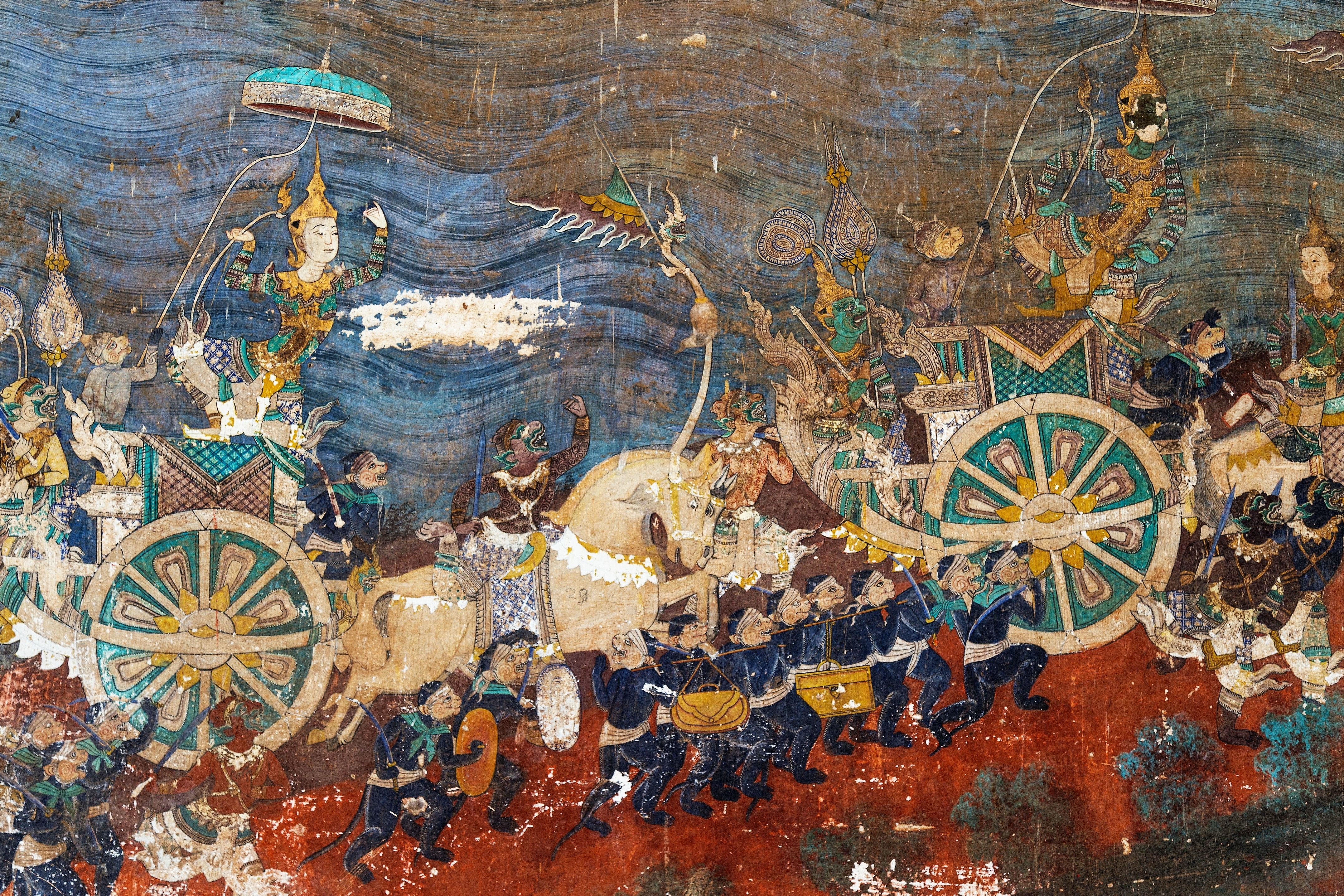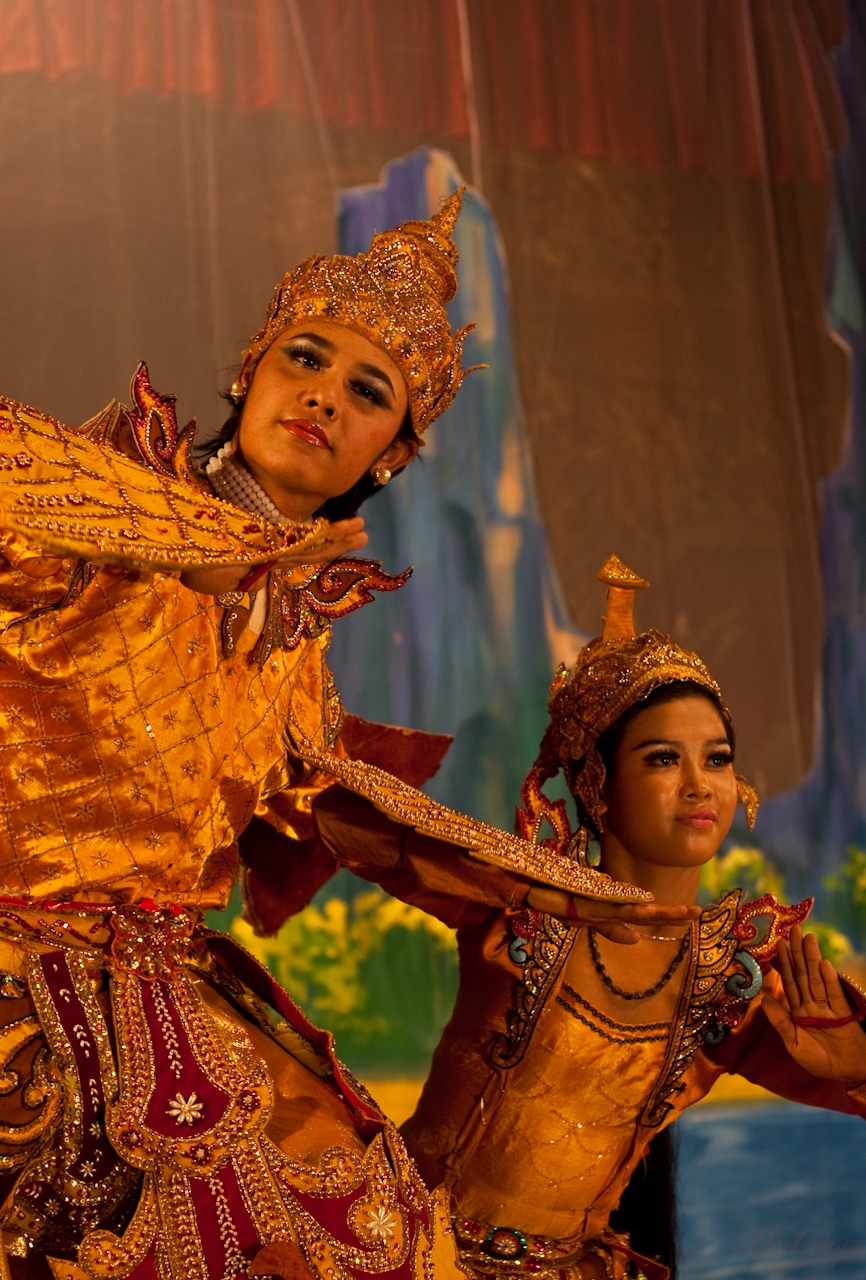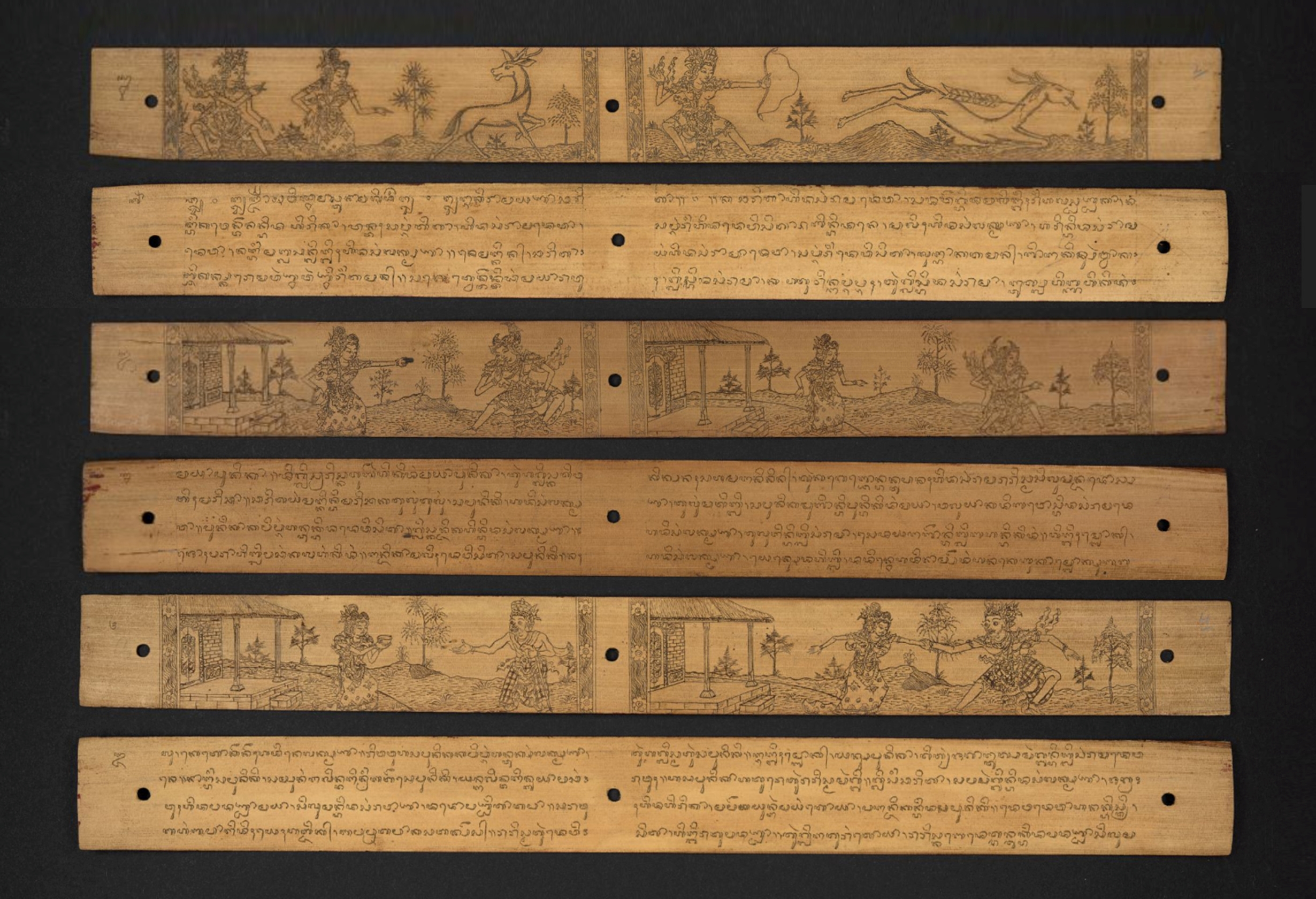According to the French Indologist, Sylvain Levi, the ‘Mother of Wisdom', India gave her mythology to her neighbours who went to teach it to the whole world. Mother of law and philosophy, she gave to three-quarters of Asia, a god, a religion, a doctrine, an art.' One such specimen is the Ramayana authored by sage Valmiki about 2500 years ago.
The Most Global Epic
The Ramayana is one of the greatest ethical sagas known to the world. It acts as an influential catalyst in the cultural traditions of Southeast Asian nations, with prominent representations in their dramas, musical recitals, Ramayana ballets, paintings, sculptures, royal pageantry, rites of passage, and administrative tenets, for 1,500 years or more in some parts. Central not only in performances within Hindu cultures but also among Buddhists and Muslims, the Ramayana is perhaps globally the most performed theatrical event.
Several Southeast Asian rulers have assumed the sobriquet of Lord “Rama,” iconography relating to Lord Vishnu has graced their royal insignia, while Southeast Asian cities and metropoles have been named after iconic locations in sage Valmiki’s epic. Owing to the Ramayana’s sustained heritagisation in Southeast Asian cultures, the Indian Council for Cultural Relations has been hosting the International Ramayana Festival to celebrate hundreds of versions of the epic that hold the key to cultural and aesthetic diplomacy in the Indian Ocean world.
If Thailand has its own version, the Ramakien, and the Khon dance drama genre based on it, the Philippines has the Singkil dance form based on the Filipino version of the epic, Maharadia Lawana. If the Java island has its Kakawin Ramayana, in the kakawin meter, Laos, Myanmar, and Cambodia have their dramatic performances and Ramayana ballets based on indigenised renditions. Besides, Myanmar, Lao People's Democratic Republic, Singapore, Malaysia, and Vietnam, too, have their revered Ramayana traditions.
Buddhist Ramayanas
Myanmar, Laos, Cambodia, and Thailand — nations that are predominantly led by Theravada Buddhism—have preeminent Ramayana traditions with Buddhist inflexions, reinterpretations, interpolations, and adaptations.
The Burmese version of the epic, Yamayana or Yama Zatdaw, held to be a Jataka tale in the canon of Theravada Buddhism, has Rama as Yama and Sita as Thida. It is believed to date back to oral performances introduced during the eleventh-century regime of King Anawratha, although the version is more prevalent today in the country which constitutes several inspirations drawn from the Thai version, Ramakien, popularised by the eighteenth-century Ayutthaya Kingdom, besides imbibing non-Buddhistic strands from the cultures of Indonesia and Malaysia, from the sixteenth to the nineteenth centuries. The Yama Zatdaw is made singular in its incorporation of vivacious and athletic aesthetic elements from traditional Burmese dance forms and sartorial accoutrements that distinguish it from other adaptations of the Ramayana.

Another Buddhist retelling of the Ramayana is the Lao national epic known as Phra Lak Phra Ram. Most of the action of the epic is set alongside the banks of the Mekong River, which is the Southeast Asian mainland what the Ganga is to India. Held to be a Jataka story by the Lao people, the epic's chief protagonist, Phra Ram or the Lao version of Rama, is believed to be a divine predecessor to Gautama Buddha, and embodies the pinnacle of moral and dharmic perfection. Similarly, the Lao version of Ravana, Hapmanasouane, is believed to be a predecessor of Mara, supposedly the demonical entity that attempted to hinder the Buddha's path to Moksha.
The Cambodian national epic, Reamker, renames Rama as Preah Ream, Lakshmana as Preah Leak, and Sita as Neang Seda, and, so on, besides inventing key episodes that are absent in Valmiki Ramayana — such as the iconic encounter between Preah Ream's monkey commander, Hanuman, and the mermaid, Sovann Maccha. Reamker practically dates back to the seventh century, and, today, it is one of the most significant media for the Khmer people to represent their dance form, the Lakhon.
Paintings based on Reamker's iconography populate the Royal Palace in Khmer style as well as the walls of the Angkor Wat and Banteay Srei temples. Somewhat like the Uttara Kanda of Valmiki Ramayan, Reamker also has Preah Ream test the virtuosity of Neang Seda through a trial by fire, which she passes, only to feel deeply affronted by his lack of faith in her. Following the trial, she leaves him and seeks refuge in the hermitage of sage Valmiki, where she gives birth to her and Preah Ream’s twin boys, who are to be reunited with their father.
Thailand's national epic, the Ramakien, is widely noted for being as old as 700 years, although most of its versions were destroyed or lost during the sieges of Ayutthaya in 1766-1767 led by generals of the Burmese Konbaung dynasty. The extant version which is performatively and pedagogically popular in Thailand today dates back to the reign of King Rama I, the first monarch of the Chakri dynasty of Siam. Besides the Jataka tale known as Dasaratha Nataka, Ramakien draws inspiration from Vishnu Purana and Hanuman Nataka. Thus, episodes in Ramakien bear a strong resemblance to Valmiki’s epic, whose plot and subplots appear to have been superimposed onto the geography and ethos of Ayutthaya, that witnesses the divine incarnation of Phra Narai (Vishnu or Narayana) in the form of Phra Ram. Today, Ramakien is the principal performative vehicle for all nang and khon performances in Thailand.

Muslim Ramayanas
It often comes as a great surprise to those not hitherto exposed to the fact that Indonesia, despite being the largest Muslim nation in the world, enjoys the unabated preeminence of the Ramayana (and Indian Puranas in general). While this may be seen as proof of the cultural plasticity of Southeast Asian Islam, it is also, more evidently, a testimony to the indisputable penetration that Indic cultural influences continue to have in the region.
The Javanese city of Yogyakarta is believed to be a variant of the name Ayodhya, the capital of Rama's kingdom. Javanese adaptations of the Ramayana, including Sendratari Ramayana, are generally staged via puppet shows known as wayang kulit that can last up to several nights. Javanese Ramayana ballet performances adhere to the Wayang Wong tradition, and are generally performed at the Hindu temple of Prambanan, the Yogyakarta Purawisata cultural center, and Hyatt Regency Yogyakarta Hotel. One of the major Javanese interpolations in the Valmiki Ramayana is that of the omnipotent deity Dhayana, the Javanese Guardian God, and his three deformed sons, Gareng, Petruk, and Bagong.
The Malaysian epic, Hikayat Seri Rama, is very likely a product of the region’s contact with Tamil traders prior to and after the Islamisation of the islands. After the fourteenth century, the Islamic ethos of present-day Malaysia found the Ramayana’s motifs of fidelity, righteousness, and self-effacement not contrary but complementary to the spirit of the new religion of an erstwhile Indianised space.
Supposedly, between 1300 and 1700 AD, the Ramayana was transformed into the hikayat genre—meaning "stories" in Arabic—which evolved to become an integral form in the Malay literary tradition. One Malaysian variation in the tradition of wayang kulit tradition depicts Maharaja Wana (Ravana) as relatively more honourable and righteous, while Seri Rama (Rama) is portrayed as relatively egotistical and self-righteous.
In the Philippines, the Ramayana’s adaptation, known as Maharadia Lawana, comprises Islamic elements, angels, titles like Sultan and Shah, and also the acknowledgement of Allah. The epic constitutes the Darangen mythology, which is central to the life of the Maranao people, whose history is said to be embedded in their performances of the epic. The Darangen version bears several resemblances with the Malaysian adaptations of the epic and is said to predate the advent of Islam. Allegories of environmental degradation and evolution can be found in the epic's performances through the Singkil dance form, where performers dexterously navigate click-clacking bamboo rods.

The Wealth of Versatile Inspirations
The Ramayana's enduring imprints in Southeast Asian culture is the living legacy of Indic colonisation of the Indian Ocean region and the persona of Rama as the guiding inspiration for generations of Indian kings who ruled over or traded with territories in and around the Malay Archipelago and north of the South China Sea.
With increasing adaptations in these islandic territories, Rama's otherworldly demeanor became generally more humanised, lifelike, credible, and, thus, ethically more accessible to common spectators. Seen together with Valmiki Ramayana, this enlarged canon of the epic's numerous versions and performances deeply enrich the otherwise easy binaries that we resort to while reading the epic.
In the end, we recognise that Rama, the avatar, is also fallible, while he is on the road to perfection; Sita, another divine reflection, is fallible, too, while she never expects to be pedestalised; Lakshmana, the steadfast brother and guard has his share of flaws, such as rage; and Ravana, despite his arrogance and ambition, is not beyond redemption.
It will seem that the great Indian epic’s Southeast Asian versions greatly alter what may be recounted by millions of Indians as the "original" story. Nevertheless, the alterations only augment the scope of versatile inspirations that sage Valmiki—the man or the tradition—may have intended to bequeath to his posterity. This realization can be instrumental in driving generations of not only young and adult Indian citizens, but Indian bureaucrats and diplomats who have their gaze stretched across the new horizons of the Indo-Pacific where India once again appears to be emerging as a de-facto observer and forerunner.




